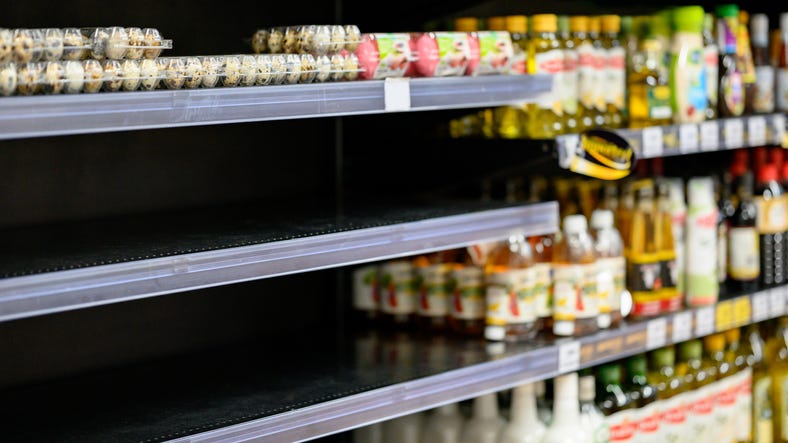
Some shelves are bare yet again in grocery stores across the U.S. as shoppers are leaving with items not crossed off their shopping lists amid supply chain issues.
This time around, the empty shelves result from the recent surge in omicron cases and the weather stopping stores from being stocked.
Past factors still play a part, with labor shortages continuing to be a problem for retailers, dating back to the pandemic's beginning.
Truck drivers, for example, have been in demand before the pandemic began, and the demand has gotten worse during the pandemic.
In October, the American Trucking Associations said in the U.S., there was an estimated shortage of 80,000 drivers.
But when it comes to what's out of stock, it isn't just one aisle at the grocery store that's empty. Shortages are being felt everywhere, with meat, produce, and packaged goods all being out nationwide.
According to Consumer Brands Association President and CEO Geoff Freeman, U.S. groceries typically have 5% to 10% of their items not in stock at any given time. Yet, right now, that rate is sitting around 15%, the Associated Press reported.
Another possible cause for why groceries have been harder to get during the pandemic than before is that Americans are eating at home more than they used to, the AP reported.
Last year the average U.S. household spent $144 a week on groceries, according to FMI. That number went down from the peak of $161 in 2020 but is still well above the 2019 average of $113.50.
When panic buying started as government shutdowns began rolling out, retailers and food producers began adjusting to their new realities, according to Jessica Dankert, the vice president of supply chain at the Retail Industry Leaders Association, told the AP.
"All of the players in the supply chain ecosystem have gotten to a point where they have that playbook, and they're able to navigate that baseline level of challenges," Dankert said.
The weather has also played a factor as of late, with snowstorms in the Northeast and wildfires in Colorado impacting product availability and causing some to stock up more than usual.


